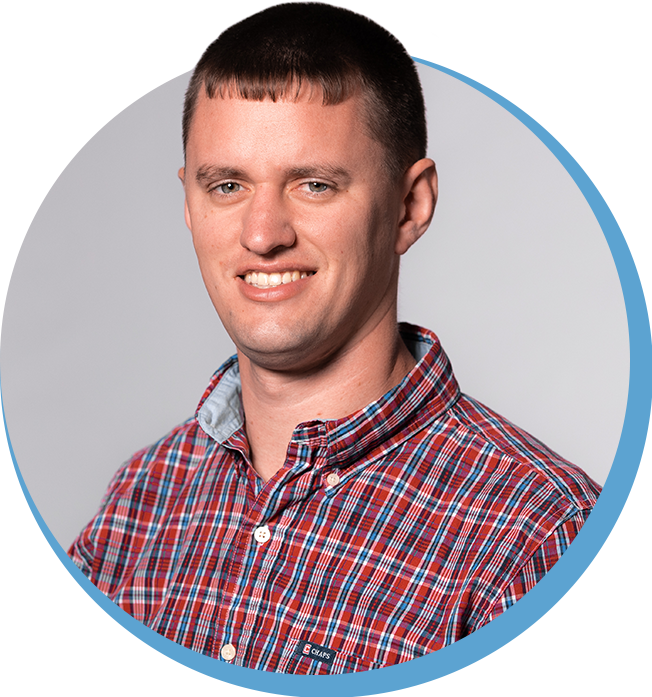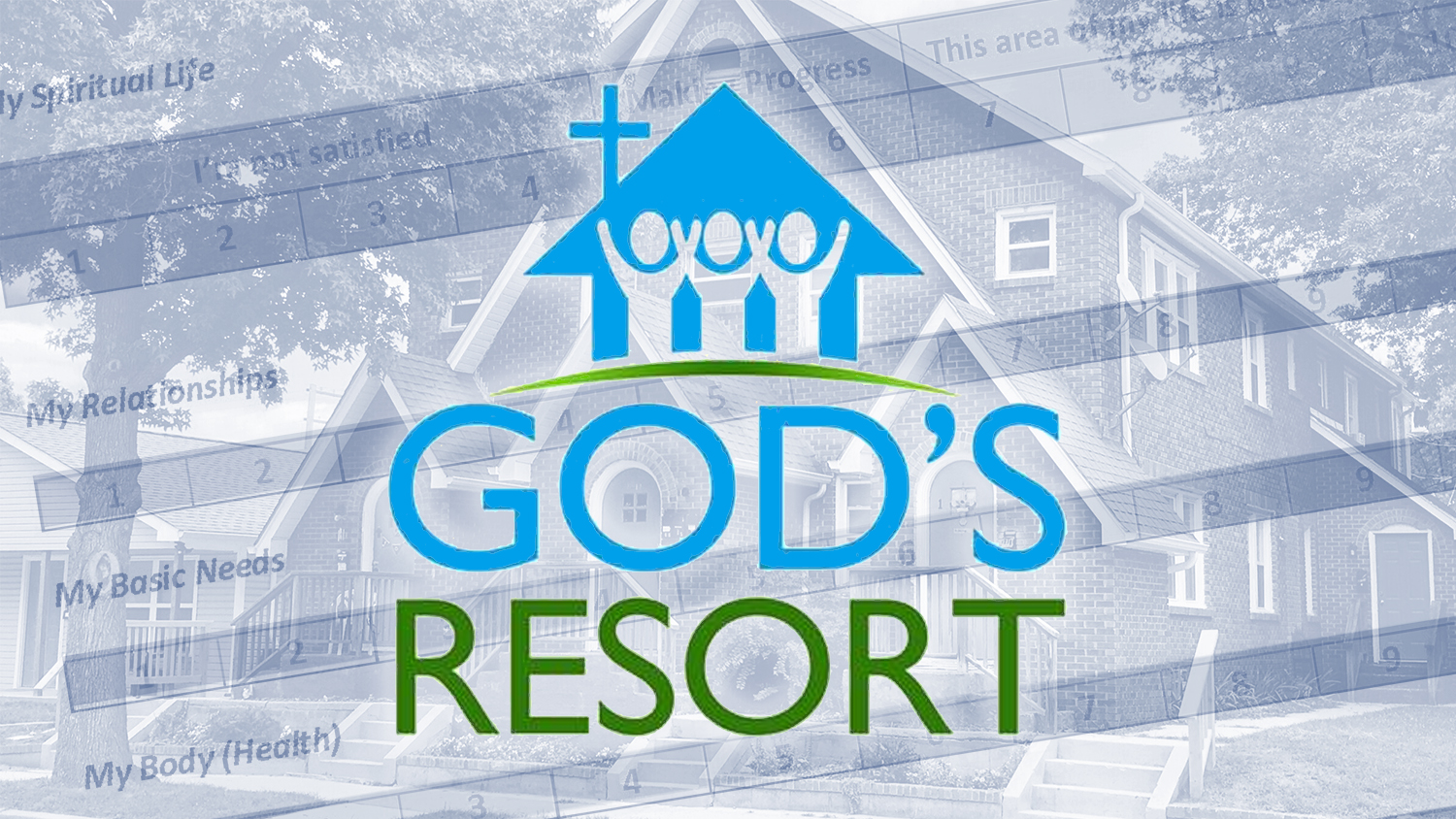Therapeutic Spreadsheets: How Data Facilitate Healing at a Transitional Housing Ministry

Nathan Mayo
Director of Member Services
Read more from Nathan
In 2006, Jay and Julie St. Clair helped transform a ramshackle apartment complex known on the street as “The Last Resort” into an urban transitional housing program they christened “God’s Resort.” From the original few units, God’s Resort has expanded to now offer nearly 40 housing units for people who need both affordable housing and an intentional supportive community to assist them out of addiction, poverty, or trauma. God’s Resort is not a rehab facility; rather, it’s a next step for people who find themselves stuck. Some are recent graduates of other programs. Others don’t come from a program but just need a supportive community to help them meet their personal goals.
Residents pay rent at around 60-70% of market rates and agree to meet with Life Transition Coordinators twice a month (who function like case managers), participate in some weekly community events (choosing from multiple options), and stay verifiably drug and alcohol free. Residents typically stay for around two years before they are ready to move on to fully independent housing.
![]()
THE RATIONALE
While many nonprofits would be content to leave the program description with what they are trying to accomplish, the team at God’s Resort was dissatisfied with that. They wanted to know that their programs really work. Do people really leave in a better condition than when they came? A couple of years ago, the team at God’s Resort would not have been able to answer that question—now they can.
In 2019, Jay St. Clair, in part inspired by James Whitford of the True Charity Initiative, realized that they needed to start measuring outcomes in their program. By outcomes, we mean the long-term objectives in the lives of your clients, not merely the quantity of services your organization provides. Jay said they decided to make the switch to measuring outcomes because he knew it would help them serve their people better and so he could give his donors more confidence than mere anecdotal evidence could provide.
![]()
THE IMPACT
According to the assistant executive director, Beau Hamlin, once they began measuring outcomes, they were quickly excited by the demonstrable success their program already had. They started by measuring indicators of long-term wins for their clients such as number of trusted friends, amount of times they volunteer, number of Christian fellowship events attended, weeks of unbroken employment, credit score, debt, months of sobriety, and a personal stability assessment quiz (more detail is available in the attachments).
They found that the residents, on net, were appreciative of the evaluations. The assessments lead to natural goal setting conversations. Because the program is generally full of people who have expressed an interest in improving their own situation, most clients will see positive change over time. For many of them, this is the first time in years that the trajectory of their life has been positive, and seeing the improving numbers gives them the confidence to believe the progress is real. Beau says, “Beside every number we try to collect is a corresponding question we ask our residents. Each question reveals a piece of someone’s life.” Consequently, asking these questions can be very personal and must be done in a sensitive way. The God’s Resort team stresses to clients that the numbers, such as months of sobriety, weeks of unbroken employment, or credit scores, are not the core identity of the clients, they are merely tools to help gage progress and relative strengths and areas for improvement.
The new outcomes measurement processes made it easier to fairly identify residents who were stuck in ruts and provide Transition Coordinators with the solid evidence needed to help overcome those residents’ denial. This created the basis to get them to either progress or to free up the housing for the long waiting list of people more interested in personal growth.
The data collection not only has an impact on the clients but on the programs. The staff at God’s Resort is able to look for areas in which clients are struggling across the board and identify ways to offer the targeted services they need.
Donors also noticed the shift to measuring results. In 2020, God’s Resort gave a second presentation of this program data to community members to show change over time, including personal testimonials to personify the numbers. In response, one potential donor said, “We’ve always been interested in your program, but your commitment to measuring your impact now gives us the confidence to start investing in your ministry.”
![]()
THE PROCESS
Filling out the stability assessments is an active process. The staff has learned that the best practice is to talk the clients through the questions rather than just let clients fill them out alone.
God’s Resort staff meet with clients monthly and try to keep track of key metrics as the topics arise. Beyond this, they do a deliberate quarterly assessment of all the metrics for each client, except the more in-depth personal stability assessment, which is conducted every six months.
The person who meets with residents to assist in goal setting and progress tracking, as mentioned previously, is referred to as a “Life Transition Coordinator.” The meaning behind the title is that the coordinator isn’t there to solve all of the residents’ problems for them, but rather to connect them to the resources they need.
The data these assessments generate are stored in a secure cloud-based software. God’s Resort ensures that their clients give informed consent on the purpose and usage of the sensitive information. (They use Tresorit.com, which offers a 50% nonprofit discount on secure cloud storage.) The data are used on an ongoing basis to assist individual clients with their own progress. They also compile key metrics from all of the clients into spreadsheets for trend analysis and donor reporting.
![]()
THE COST
Beau remarked that the time required to collect and sort data was significantly less straining than one might imagine. That’s because they have found that the most intensive part of the process, sitting with clients and working through assessments with them, is actually quite therapeutic—the outcomes measurement process became a way to set and achieve personal goals more deliberately and, thus, contributed to their existing transition goals. Other than that, they aggregate the data for internal assessment and donor reporting every few months in metrics that do not identify individual residents.
![]()
THE LESSONS LEARNED
Beau cautions that you must ensure the metrics and assessments you use don’t delve deeper into the personal lives of the clients than you are able to safely go. Assessments designed for professional counselors are often outside of the scope of work of a typical nonprofit. Even for in-house tools, sometimes a question on an assessment could trigger someone to open up about deep childhood trauma. Most likely, your team won’t be equipped to do in-house trauma counseling and will need to either refer those clients to outside sources or structure assessments in a way to only bring up issues that you are reasonably equipped to address.
Beau also acknowledges that the need to find people who are good at working through structured assessments with clients has informed their hiring practices. The role of a counselor is different than the role of a coordinator. Titles, but more specifically job descriptions, help direct hiring processes, as well as inform the staff on how to spend their time. For example, a coordinator intentionally facilitates the achievement of goals while navigating some personal struggles, as opposed to primarily performing non-clinical counseling sessions. This structure helps keep the conversations more productive by ensuring coordinators engage clients in topics relevant to the client’s personal growth. Now, they spend more time talking about budgeting and volunteerism and less time talking about arenas outside of the client’s control. When serious issues arise, they leverage professionally trained outside assistance.
Beau also opines with a quote that one of their board members shared with him: “Data is refined through use.” In other words, their measurement has become both more accurate and useful as they have continually put it to the test. If you’re not measuring outcomes in your organization, yet, Beau says the best advice is to start. “Don’t be afraid to jump in—but bring someone along who is familiar with data collection, systematizing, and utilization.” If your organization is a member of the True Charity Network, we are happy to work with you through our outcomes training and coaching, as we have done with God’s Resort.
God’s Resort is also a Certified True Charity because of their commitment to voluntary funding, challenging programs, and measurable results. Their example shows that measuring program outcomes is not only feasible but can also have a profound impact on your clients, programs, and supporters. For more tools like the ones below, True Charity Network members can go to the members portal.
DOWNLOADS
- God’s Resort Resident Self-Assessment (DOC)
- God’s Resort Resident Self-Assessment (PDF)
- Outcomes Card – Front (JPG)
- Outcomes Card – Back (JPG)
- Resident Outcomes Reporting Sheet (XLSX)
- Sample Transitional Housing Outcomes Tracker (XLSX)




